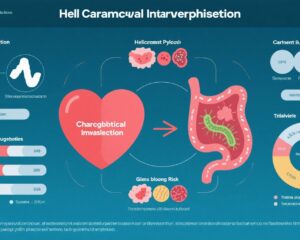Background
Depression remains the leading cause of disability worldwide, imposing substantial burdens on mental and physical health. Increasing physical activity has been consistently linked to reduced depression risk, yet the 24-hour day imposes constraints, meaning time allocated to physical activity must come at the expense of other behaviors such as sedentary activities or sleep. Among sedentary behaviors, TV-watching stands out due to its association with increased depressive symptoms, likely driven by biological and psychosocial mechanisms including dopamine dysregulation and social isolation. However, it is unclear how reallocating time from TV-watching to other activities such as physical exercise or sleep impacts major depressive disorder (MD) incidence across different age groups.
Study Design
This investigation utilized data from the Lifelines Cohort Study, a large prospective population-based cohort in the Netherlands, following 65,454 adults aged 18 and older without baseline MD for approximately four years. Participants self-reported daily time spent watching TV, engaging in various physical activities (household tasks, sports, leisure/commuting, work/school physical activity), and sleeping. Incident MD was assessed using the Mini International Neuropsychiatric Interview (MINI), a structured diagnostic tool adhering to DSM-IV criteria. Analyses applied compositional data analysis methods to account for the interplay of time spent in different movement-related behaviors within a constrained 24-hour period. Researchers specifically examined the effect of replacing increments of TV-watching time with physical activities or sleep, adjusting for sociodemographic confounders, and stratified results by age group categories: young adults (18-39), middle-aged (40-59), and older adults (60+).
Key Findings
The overall incidence of MD during follow-up was 2.4%. Substituting TV-watching time with other physical activities or sleep was associated with significant reductions in depression risk, but effects varied markedly by age group.
– Middle-Aged Adults (40-59 years): This group exhibited the most robust benefit. Replacing 60 minutes of TV-watching daily with physical activities or sleep decreased the predicted probability of incident MD from 2.39% to 1.94%, corresponding to an 18.8% relative reduction. Greater substitutions yielded larger reductions, up to 43% with 120 minutes reallocated.
Among specific activities, substituting 30 minutes of TV-watching with sports produced the largest risk reduction (18%), followed by work/school physical activity (10%), leisure/commuting physical activity (8%), and increased sleep duration (9%). Household activities showed smaller or inconsistent benefits.
– Older Adults (60+ years): Only reallocating TV-watching time to sports demonstrated a significant decrease in depression risk (~29% reduction with 30 minutes substitution). Other activity substitutions, including sleep and leisure physical activity, did not show significant effects, possibly due to lower intensity or social dimensions.
– Younger Adults (18-39 years): No statistically significant benefits were observed when reallocating TV-watching time. Potential explanations include higher baseline activity levels or dominance of other risk factors such as genetic predisposition in this age group.
Sensitivity analyses confirmed the robustness of these findings, though effect sizes were attenuated in subsets restricted by total reported daily activity time and zero activity reporting.
Expert Commentary
This study convincingly demonstrates that cutting down TV-watching time in favor of physical activity and sleep can substantially reduce the risk of developing major depression in middle-aged adults. The use of compositional data analysis is methodologically sound, addressing the inherent time trade-offs in daily activities, a notable advancement over previous studies that have either ignored these dependencies or been cross-sectional.
The differential age effects align with known biological and psychosocial distinctions across the lifespan. For middle-aged adults, who often face high work and family demands combined with sedentary lifestyles, even modest shifts toward exercise or better sleep may counteract depression risk pathways including inflammation and HPA axis dysregulation. In older adults, the social nature and intensity of sports might confer added protective effects, consistent with evidence linking loneliness and late-life depression. The lack of significant findings in younger adults suggests that preventive strategies should consider age-specific mechanisms and behaviors.
Limitations include reliance on self-reported activity and sleep, which may induce measurement bias. Moreover, TV-watching’s evolving nature and substitution with screen time on other devices—particularly in younger populations—warrant further investigation.
Conclusion
The findings underscore the critical importance of reducing TV-watching time among middle-aged adults as a viable, actionable strategy to prevent major depression. Encouraging substitution with sports, other physical activities, or sleep can yield meaningful mental health benefits. For clinicians and public health practitioners, promoting active lifestyles and limiting sedentary behaviors such as prolonged TV-watching should be prioritized, particularly for middle-aged populations. Future research should explore tailored interventions for younger and older adults and examine other sedentary behaviors and activity types in relation to depression risk.
References
Palazuelos-González R, Oude Voshaar RC, Liefbroer AC, Smidt N. Effects of substituting TV-watching time with physical activities or sleep on incident major depression. Results from the lifelines cohort study. Eur Psychiatry. 2025 May 30;68(1):e73. doi: 10.1192/j.eurpsy.2025.10045. PMID: 40443280; PMCID: PMC12303778.
Liu Z, Werneck AO, Herold F, Lowe CJ, Hallgren M, Cheval B, Tari B, Stubbs B, Gerber M, Falck RS, Kramer AF, Owen N, Zou L. Bidirectional relationships between television viewing and loneliness in middle-aged and older men and women. J Affect Disord. 2025 Nov 1;388:119737. doi: 10.1016/j.jad.2025.119737. Epub 2025 Jun 19. PMID: 40543613.



